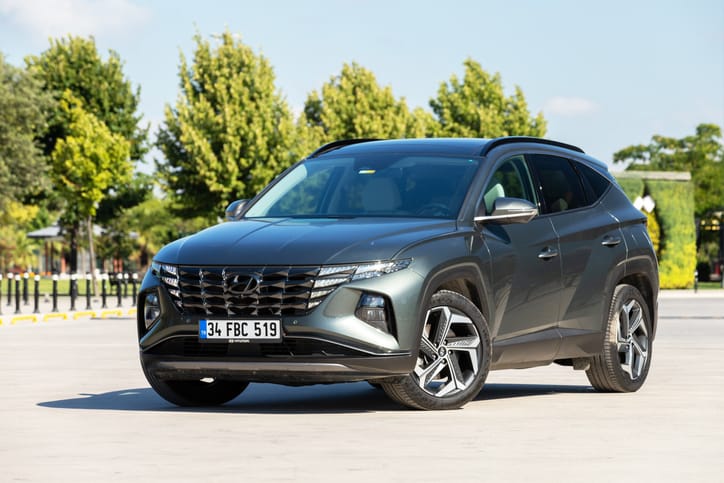Compact SUV Smackdown: Hyundai Tucson vs. Kia Sportage

The compact SUV segment is a battleground, with automakers vying for supremacy. Two contenders at the forefront are the Hyundai Tucson and the Kia Sportage. These Korean cousins share a platform and many features, making them close rivals. But which one emerges victorious? Let's delve into a head-to-head comparison to help you decide.
Sleek Styles or Rugged Appeal?
The 2024 Tucson embraces a futuristic look. Its angular lines, geometric grille, and hidden headlights turn heads. The Sportage counters with a bolder, sportier presence. Its "tiger nose" grille and boomerang tail lights exude a sense of adventure.
Interior Ambiance
Both SUVs offer well-crafted cabins with quality materials. The Tucson prioritizes a driver-centric layout, with controls angled towards the pilot. The Sportage boasts a more spacious feel, particularly in the rear seats. Opting for higher trims unlocks features like panoramic sunroofs and heated/ventilated seats in both vehicles.
Tech Showdown
The Tucson comes standard with an 8-inch touchscreen, while higher trims offer a larger 10.25-inch display. The Sportage offers an available 12.3-inch touchscreen, upping the wow factor. Both systems integrate wireless Apple CarPlay and Android Auto for seamless smartphone connectivity. Safety features abound, with forward-collision warning, lane-departure assist, and automatic emergency braking standard on most trims.

Powertrain Punch
The Tucson and Sportage share a trio of powertrain options:
- 2.5L Gas Engine: This delivers a peppy 187 horsepower, suitable for daily commutes. Both front-wheel drive (FWD) and all-wheel drive (AWD) configurations are available.
- Hybrid Powertrain: This eco-friendly option combines a 1.6L turbocharged engine with an electric motor for a combined output of 227 horsepower in the Tucson (Kia's official figures for the Sportage hybrid are not yet available). It comes standard with AWD.
- Plug-in Hybrid (PHEV): This powerhouse offers the best of both worlds, with electric driving capability and a gasoline engine for longer trips. The Tucson PHEV boasts 261 horsepower and an estimated 33 miles of electric range. Kia is yet to reveal the official specifications for their PHEV Sportage.
Fuel efficiency is a close call. Both SUVs deliver similar gas mileage figures for the standard engine. The hybrid versions offer superior fuel economy, with the Tucson edging out the Sportage by a hair on highway mileage. The PHEV reigns supreme for eco-conscious drivers, with the Tucson offering an enticing combination of electric range and power.
Value Proposition
Pricing is near identical for both vehicles. The base Tucson starts at $27,250, while the Sportage comes in slightly lower at $27,090. Feature-for-feature, they remain neck-and-neck. However, the Sportage offers a tempting X-Line trim with a more rugged appearance and standard AWD, appealing to off-road enthusiasts.
The Verdict: A Split Decision
Choosing between the Tucson and Sportage boils down to personal preference.
Pick the Tucson if:
- You prioritize a futuristic, eye-catching design.
- You prefer a driver-focused cockpit layout.
- You value a slight edge in highway fuel economy for the hybrid version.
Pick the Sportage if:
- You crave a bolder, more adventurous aesthetic.
- You desire a roomier back seat.
- You're drawn to the larger available touchscreen display.
- You want a standard AWD option with a more rugged look (X-Line trim).
Ultimately, both SUVs are excellent choices in the compact SUV segment. Test drive both and see which one resonates with your style and driving needs. Happy shopping!
